Talk about a quiet achiever. The Skoda Kodiaq range has helped the Czech brand’s Aussie arm climb to unseen levels when it comes to sales, and that’s probably why Skoda is now as familiar to you as Nissan or Volkswagen.
Since launch in 2017, the current-gen Kodiaq has seen more than 6500 customers choose it over one of its rivals - namely the Hyundai Santa Fe, Kia Sorento, Mazda CX-8, Volkswagen Tiguan Allspace, Mitsubishi Outlander, Nissan X-Trail, Toyota Kluger... there’s a long list of seven-seat SUVs out there to choose from.
So has this update - which sees a freshened up appearance, some revisions to pricing and specifications, a new ownership approach and the deletion of diesel power - added to its appeal? In this review, I’ll tell you what I reckon.
Skoda Kodiaq 2022: Style (4X4)
| Engine Type | Turbo 4, 2.0L |
|---|---|
| Fuel Type | Premium Unleaded Petrol |
| Fuel Efficiency | 8.2L/100km (combined) |
| Seating | 7 |
| Price From | $41,690 - $49,060 |
| Safety Rating |
|
Does it represent good value for the price? What features does it come with?
7 / 10
It's confusing when it comes to pricing for the 2022 updated Skoda Kodiaq range. Back in August 2021, there was a pricing announcement, and then there were some effects of the semiconductor shortage that meant some items were unavailable. And now, the full-fat Kodiaq range is back on stream, but just take note - there are still de-specced cars on showroom forecourts, so check you're getting what you want when you go shopping.
Prices are up a bit compared to that original 2021 announcement, with the line-up consisting of the following models: the entry-level Style, which is $52,990 drive-away (the equivalent base model was previously $49,490 drive-away); the mid-spec Sportline, which is $57,990 drive-away (up $4000); and the top-spec flagship RS, at $74,990 drive-away (same as before, but now with less grunt - more on that in the engines section).
The Style grade is $3500 more than the previous base model, but it opens the range with a bunch of nice inclusions - 19-inch alloy wheels, LED headlights and DRLs, roof rails, keyless entry and push-start, the ‘virtual cockpit' digital instrument cluster, a 9.2-inch multimedia display with wireless Apple CarPlay and Android Auto, privacy glass, ambient interior lighting, dual-zone climate control, a wireless phone charger and USB-C ports.
There is also proximity unlocking for all doors, an electric tailgate, tinted rear glass, integrated rear window shades, and those clever touches we've come to expect from Skoda, including an umbrella in the driver's door, a picnic mat under the boot floor, and cargo netting, too.
According to Skoda, customers who buy the Style model are likely to choose either (or both) of the available option packs.
First is the Tech Pack ($3000) that includes adaptive suspension, drive mode selector, an off-road mode, auto parking assist, 12-speaker sound system, gesture-kick tailgate and the Sleep Package (extended rear headrests).
Then there's the Luxury Pack ($6500) that adds Matrix LED headlights, electrically adjustable front seats with memory settings, Ergonomic seats, perforated leather upholstery, heated front and rear seats, heated steering wheel with paddle shifters, three-zone climate control, auto-folding door mirrors, and a few safety items that really should be standard at this price point: blind-spot monitoring, rear cross-traffic alert, active lane keeping assist and a surround view camera, among other things.
Choose the Sportline at $57,990 and your extra five grand buys you some stuff you'll be happy to have, including 20-inch wheels, Matrix LED headlights with adaptive beams and auto high-beam, Alcantara and leather seat trim, electric driver's seat adjustment with memory settings, a progressive steering setup (sportier steering), fog-lights with cornering function, and the Sportline exterior styling pack with additional colour-coding and black highlights, and a drive mode select system. The interior headlining is black, too, and it has Alcantara trim on the doors, and a different plastic trim finish as well.
Again, you can choose the Tech Pack ($3000) as above, or the Luxury Pack ($3700) which adjusts for a few standard items fitted to the Sportline grade, but again, none of that aforementioned safety stuff you should have standard.
In both the Style and Sportline trim levels, there's also the option of a panoramic glass roof ($1900) and the Sportline also has the choice of leather seat trim with ventilation ($1900).
Then there's the RS - no packs or optional extras available for it - as it gets the full flex of active safety equipment as well as unique aero-inspired 20-inch wheels, all the stuff you'd get if you optioned either of the other grades up with the packages, plus specific interior trim with quilted leather with red contrast stitching, carbon-look plastic, and that new petrol engine with more power and torque than the lower grades. More on that below.
Colours that are no cost include Energy Blue (Style only), Steel Grey (Sportline and RS only); then there's the metallic Moon White, Lava Blue (Style only), Race Blue (RS only), Graphite Grey, Brilliant Silver and Magic Black pearl - these ones cost you $770; and the $1100 Velvet Red premium paint, which is on Sportline or RS only.
Is there anything interesting about its design?
8 / 10
The Kodiaq RS is definitely the looker of the range, with its more aggressive appearance and eye-catching wheels which I'm not a huge fan of. But they hide a secret - if you don't like that aero-look, you can remove the plastic covers for a more conventional sporty wheel design - you'll just need to get some new centre caps and wheel nut covers.
On the whole, though, if you ask me, the facelifted Kodiaq isn't quite as good looking as the last version, though. The headlights have been redesigned, as have the daytime running lights and the grille, and while they all look pretty tidy on the RS model, and the Sportline looks nice, too.
.jpg)
But I reckon the chrome finish on the base grade looks a bit senior. It's a bit like when I look at myself in the mirror these days - not quite as good looking as in days gone by.
Nothing's really changed in terms of the side profile apart from the wheels fitted. The base model you see in these images and in the video rides on 19-inch "Cursor" alloy wheels, but the standard rims are a multispoke rim that won't be to all tastes.
Something you might not be able to un-see are the door handles, which look like they're in the wrong spot on the doors. Right? But they are all proximity unlocking doors, which is great, and the clever door edge protector that flips out and stops you from chipping the paint or denting nearby cars have been carried over to the facelift model.
.jpg)
At the rear it's good to see that all models in this range now have LED lighting as well.
Inside you might not pick much in the way of differences in the lower grade versions, but there is a new steering wheel with different buttons and dials. In the RS models, the changes are a bit more noticeable, with perforated leather seat trim with cooling now featuring, while the old model had part-leather, part-Alcantara trim.

How practical is the space inside?
8 / 10
There are plenty of neat Skoda touches in the cabin, from the dual glovebox setup to the lined, oversized door pockets, to the so-called "Mega Box" storage bin between the front seats.
But I have an issue with the cup holders in the front and second row. They're too small. And too shallow. I put a takeaway coffee cup in, and because the cup holder is also awkwardly positioned, I managed to spill my coffee. Twice. My keep cup didn't fit either, and nor did my water bottle. Mobile beverage aficionados, take note.
I also struggle to come to terms with the media system, which - with a 9.2-inch screen - looks great, but lacks buttons or knobs or dials to make interacting with it easy when you're driving. There are steering wheel controls, of course, but even newer versions of Skoda models (like the long-term Octavia I had) included a home-strip that made these jobs a bit easier.
.jpg)
Also, is it good enough that you're getting a 9.2-inch screen whether you choose the base model or the $22k-dearer RS? Some would expect a larger media screen, and rivals have 10.3-inch units.
At least this new one supports wireless Apple CarPlay and Android Auto, and there's a standard wireless charging mat, too. If you're like me and prefer to plug in to the media system using a USB cable, it'll have to be a USB-C one, as that's all that's on offer.
Also worth noting is that there are only two USB ports in the entire car, which makes the likes of the Kia Sorento (with up to EIGHT!) look very generous.
.jpg)
As for front-seat comfort, it's good. I didn't get a chance to sample the base model's real seats, as the 132TSI Style I drove had all the options boxes ticked, but the leather (if you choose it) is nice, and the RS's quilted leather makes a good impression, too.
In the second row there was enough space for me (182cm/6'0") to sit behind my own driving position, but only just. And that was with the sliding second-row all the way back. Any further forward, and it wasn't comfortable.
If you are likely to take smaller occupants with you, you'll be happy to learn there are three top-tether and two outboard ISOFIX mounts in the second row. I didn't get a chance to fit a child seat, but see Malcolm Flynn's long-term review of the pre-facelift base model, where he managed to fit three kids across the second row.
.jpg)
Another issue I have with the second-row sliding seat is that the 60:40 split layout sees the larger portion on the kerb/passenger side of the car. It doesn't make sense to me, because you'd surely want anyone who's clambering into the back row to be doing so from the kerb side, and to be doing it over the skinnier section which is easier to fold and slide.
I like the integrated sunblinds (even if they're not overly shady in direct light, so your kids might still need further shade), and again, there are big door pockets and map pockets on the seat backs, as well as directional air vents - but only a 12-volt outlet and no USB charging options.
I would say the third-row accommodation is okay for short distances, but nothing better. There are no air vents, there's no charging (apart from another 12-volt), and I struggled to fit in there - it certainly isn't as good as a Kluger for back-row room.
Further, there are no third-row child seat options, unlike rivals such as the Mazda CX-8 and CX-9, and the Kia Sorento.
So while the occupant space "in the boot" could be better, the cargo capacity is good. With all seven seats up, there's 270 litres (VDA) of boot space, while if you fold the back row down (five seats up) you've got 630L (VDA) to play with when the seats are slid back, and 765L if they're slid forward.
And the boot also has the clever bits you'd expect, like tie down points, netting, cargo box velcro attachments, and under the boot floor there's a space-saver spare wheel and even a picnic mat. Nice.
What are the key stats for the engine and transmission?
7 / 10
The Kodiaq carries over its 132TSI 2.0-litre four-cylinder turbo-petrol engine from the previous model, and it is unchanged - that means it still has 132kW of power and 320Nm of torque, a seven-speed dual-clutch automatic transmission, and all-wheel drive.
Rivals like the Kia Sorento and Hyundai Santa Fe both lack turbo-petrol power at all, and both of those (and plenty of others) are front-wheel drive as standard.
The bigger news though is the 2.0-litre, so-called 180TSI in the top-spec RS model. It's essentially the Golf GTI engine, so it has 180kW and with 370Nm of torque. Like the base grade, it's a 7-spd DSG, and AWD.
.jpg)
It may have 4kW more than the diesel engine that was offered in the pre-facelift RS, but it's down on torque by a staggering 130Nm - or 26 per cent.
However, Skoda reckons this new "free-revving" turbo-petrol is quicker from 0-100 (now 6.6 seconds, was 7.0sec), is lighter (by 60kg overall) and has less vibration, too. What about character, though? More in the driving section.
It should also be called out that none of these engines use mild-hybrid tech, nor are there any hybrid, plug-in hybrid or EV versions planned for this generation Kodiaq. At risk of being left behind, there.
.jpg)
How much fuel does it consume?
8 / 10
The official combined cycle fuel consumption for the 132TSI is 8.2 litres per 100 kilometres, which seems high for a sticker number. Often these ones are pretty hard to achieve in real-world driving, but in my few hundred kays with the 132TSI Style, I saw a return of just 8.0L/100km.
The 180TSI in the RS is said to be more efficient, using a claimed 7.5L/100km. I couldn't beat that figure, but I did drive it in a more spirited manner, and got 8.8L/100km.
It needs 95RON premium unleaded petrol across the range, and fuel tank size is 60 litres.
Warranty & Safety Rating
What safety equipment is fitted? What safety rating?
7 / 10
It was five years ago that the pre-facelift Kodiaq got the maximum five-star ANCAP rating - the stamp was applied in 2017 - but a lot has changed since then. New rivals have launched, the goalposts have moved, and the expectations of what should come standard have changed as a result.
But unlike some rivals, Skoda still asks customers who choose to buy the lower-grade models to tick an option box for active lane keeping assist, blind-spot monitoring, rear cross-traffic alert and more, which is definitely at odds with market trends in 2022, and frankly a bit backwards, especially for a family car.
Keep in mind it still betters some rivals like the Kia Sorento and Toyota Kluger, as it has airbags that cover all three rows of passengers (there are dual front, driver's knee, front side, second-row side, and full-length curtain airbags).
Plus, it still has front auto emergency braking and rear AEB too, unlike some rivals. That's good, but we really wish Skoda had been a bit more democratic in its standard safety spec for those who aren't able, willing or don't want to buy the RS (or a base model with an expensive optional pack).
What does it cost to own? What warranty is offered?
9 / 10
It's rare to see a European brand with such a clear interest in taking care of its customers in the way Skoda Australia is.
The company has the industry standard five-year/unlimited kilometre warranty plan, which is a good start.
And it also has the choice of pay as you go servicing, or a prepaid pack that makes it cheaper for you to maintain your Kodiaq ($1800 for five years/75,000km for the non-RS models, $2000 for the RS). You can roll the cost into your purchase or finance payments, which makes it one less thing to think about, and your first two services are free, compared to pay as you go capped price servicing.
But then Skoda has also added a seven-year/105,000km servicing plan, which is $2700 for Style and Sportline, $2900 for RS. That means you're getting the first three services free, and also, you get a seven-year/unlimited km warranty, too. This promotional plan is in place until 30 June 2022, and may be extended beyond that.
If you service with Skoda you'll also get the same cover for roadside assistance at no extra cost, and the plans are transferable.
If that's not right for you, there's also a subscription-based servicing plan, which includes all consumables including brakes, fluids, batteries and wipers. These are priced depending on your expected annual mileage, but an example is $44.50 per month for a driver who does 15,000km a year.
And if you're considering a used Kodiaq (or any other used Skoda), there's also the option of a four-year service pack, too.
This is a brand that really is aiming to take care of its customers.
What's it like to drive?
9 / 10
Without doubt, if you want the driver's choice, it's the RS.
From the more potent petrol engine and its more enticing soundtrack (it has a sound actuator in the exhaust that makes it sound a bit more menacing than the lower grade versions), to the progressive steering and adaptive suspension, it's a fairly sweet drive.
The engine is indeed "free-revving", and in manual mode for the transmission, with Sport driving mode chosen, you can make this thing more like a high-riding hot-hatch if you want it to be.
.jpg)
I will say, though, that the old RS model was more entertaining in my opinion. Sure, it might not have been as smooth or as fast, but it had a really growly, staunch soundtrack, and it felt more involved for the driver. The new RS's refined nature can leave you feeling a bit detached.
However, the way it can transform into a more sedate, family-focused drive is impressive too, with the Comfort program chosen, the suspension and steering settle down, as does the powertrain, and it makes for a pretty plush drive.
I also drove the other grades, and honestly, you're not going to miss the 48kW/50Nm in most situations.
.jpg)
The 132TSI still offers a good amount of grunt and pulling power, and it's hardly a slouch with a claimed 0-100km/h time of 8.4 seconds (6.6sec for the RS). That's still plenty quick for a seven-seater SUV.
It isn't quite as smooth to drive as the RS, with a little bit more hesitation from the dual-clutch automatic in low-speed situations, and also the DSG in the Style model I drove made a lot of mechanical noises in the gearbox at low speed.
The Style model misses out on the good steering system - the Progressive Steering fitted to Sportline and RS models makes them more involving to drive, whereas the base car requires more armwork to turn the car, and also has a bit more play on centre, meaning it can be a bit difficult to position yourself in the lane.
.jpg)
The Style (19-inch) and Sportline (20-inch) models have Pirelli rubber, while the RS models have Continental tyres on their 20s, and there appeared to be a more surefooted feeling in the sporty top-spec car in the bends.
And while they all ride pretty well, I found that the Style on 19s was a bit more jolty at the rear on the roads I tested it on in Sydney. None were uncomfortable, though maybe I expected the base one on the smaller wheels to be a bit more comfortable.
Verdict
All in all the changes to the 2022 Skoda Kodiaq range hardly change the game, and indeed, some further changes wouldn’t have gone astray - the inclusion of that safety gear range-wide at no cost being the chief one.
And while the RS is a well-rounded and impressive SUV, I found myself drawn more towards the mid-spec Sportline as the pick of the range. Though again, I’d have to insist upon the option box for the safety kit to be ticked.
As an alternative to its Japanese and Korean rivals, it offers a lot to think about - especially considering the brand’s commitment to care for its owners.
Pricing Guides






.jpg)
.jpg)
.jpg)
.jpg)
.jpg)
.jpg)
.jpg)
.jpg)
.jpg)
.jpg)
.jpg)
.jpg)
.jpg)
.jpg)
.jpg)
.jpg)
.jpg)
.jpg)
.jpg)
.jpg)











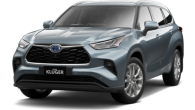



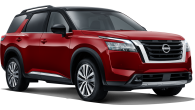








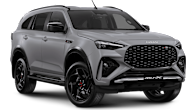



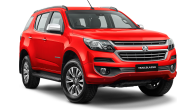


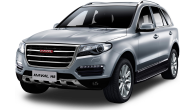




.png)

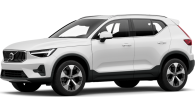




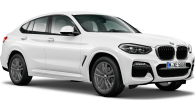

.png)


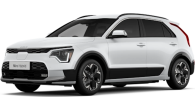
.jpg)

.jpg)



.jpg)